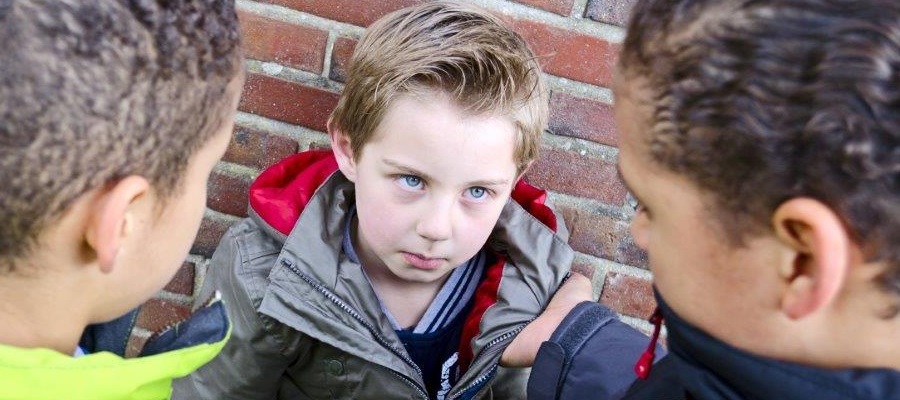Bullying is like a dangerous disease. If you don’t pay attention to the first signals, it spreads quickly and can do huge damage. It is contagious1. And in some cases it can kill.
Bullying is not a modern invention. There have always been some individuals with a sick urge2 to hurt weaker people and make their lives a living hell. They occur at each level of social existence: the family, workplace, school and even a nation.
Bullying takes a lot of forms, but they all have one thing in common: it divides a whole group into three categories – the bullies, the victims3 and the ignorant majority.
Bullies
From a psychological point of view, it is very difficult to characterize a typical bully. Some of them are aggressive and dominant by nature, but there is also a group of bullies who cover their own low self-esteem4, envy or shame by bullying the others. There are those who themselves have been bullied at home or have seen such behaviour in their own families and adopted it.
However, they all seem to have negative attitudes to life, values and people.
Bullying methods also vary from emotional and verbal to physical ones. Some victims are bullied directly – by beating, kicking, slapping, and causing property damage, for example. On the other hand, there are even more dangerous methods of indirect bullying such as gossip, manipulation and cyber bullying which lead to the social isolation of the victim and may cause terrible suffering.
Victims
The typical targets of bullying are individuals who do not fit into a group, attract attention by being different or cannot defend themselves effectively. Bullies instinctively pick the weakest individuals to confirm5 their own dominance. In a school environment, it is a great disadvantage to be physically different: extremely tall or short, overweight or wearing glasses. Race, religion, sexual orientation or even lower economic status may provoke
bullying as well. Victims aren’t able to handle the situation. They are usually well-mannered and tender hearted introverts who have never been instructed to fight back. They may feel lonely, depressed and, in some cases, even suicidal6.
Bystanders
Bullying never happens in complete secret. There is always a group of people who watch it happen or at least know about it but are unwilling to do anything.
It is caused by the false impression that “it is not a big deal,” “it’s not my business,” and “speaking out is too risky.”
In fact, bullies count on this, and their behaviour can be effectively stopped only if they are confronted by the majority. Forming a group of victim supporters is the first big step that may help things change.
How it Works
Bullying often starts as occasional teasing7. This kind of behaviour is quite natural, especially at school.
Teasing and pranks8 are ok unless they become regular and focus on one person or a group of people. At this point it is usually only a “one-to-one” performance, which should be noticed and stopped by the authorities (parents, teachers). The next step is the presence of so-called accomplices9. Those are individuals who join the original bully and form a group. This stage is very dangerous, and it becomes more difficult to intervene10. Obviously, it is much easier to stop one bully than a group of tyrants who encourage each other in their anti-social behaviour. The third step is the forming of a silent majority. Suddenly, the other members of the group start to avoid the victim until he or she is left alone. There are several explanations for that: fear of the bullies, an attempt top lease the bullies, the hatred of the victim’s weakness, or trying to avoid the problem by pretending it doesn’t exist. The final and most dangerous stage is accepting the situation. It means that the group members adopt the false idea that there is nothing wrong with the relationships within the group and that the bullying is normal. Bullies feel no guilt; the bystanders feel no responsibility; and the target is completely isolated. This behavioural model may last for years and spread like a real infection.
What to do
The best weapon is prevention. People should be warned against bullying and its dangers. Potential bullies should be watched carefully, and their anti-social activities should not be tolerated from the very beginning. Potential targets should be taught to fight for their rights and talk about their problems. The authorities should take every complaint seriously and do everything they can to help the victim. We all should know that bullying is immoral. But knowing about bullying and doing nothing is as immoral as the bullying itself.
Stop to think:
Write down as many characteristics of these people as you can and then discuss your ideas with the rest of the class:
Bullies: ____________________________
__________________________________
Victims: ____________________________
__________________________________
Bystanders: _________________________
__________________________________
What should parents do to prevent their kids from bullying or being bullied?
What do you think you would do as a victim/a bystander/an authority?
Do you agree that bullying is immoral?
Why?
Miroslava Dubanová
Vocabulary:
1/k∂nteidž∂s/ nákazlive – nakažlivé; 2/∂:dž/ nutkanie, túžba – nutkání, touha; 3obete – oběti; 4sebaúcta – sebeúcta; 5utvrdiť, upevniť – utvrdit, upevnit; 6/suisaidl/ mať samovražedné sklony – mít sebevražedné sklony; 7uťahovanie si, doberanie si – utahování si, dobírání si; 8žarť, nezbednosť – žert, nezbednost; 9/∂komplisiz/ spolupáchatelia, komplici – spolupachatelé, komplici; 10/int∂vi:n/ zasiahnúť, zakročiť –zasáhnout, zakročit

